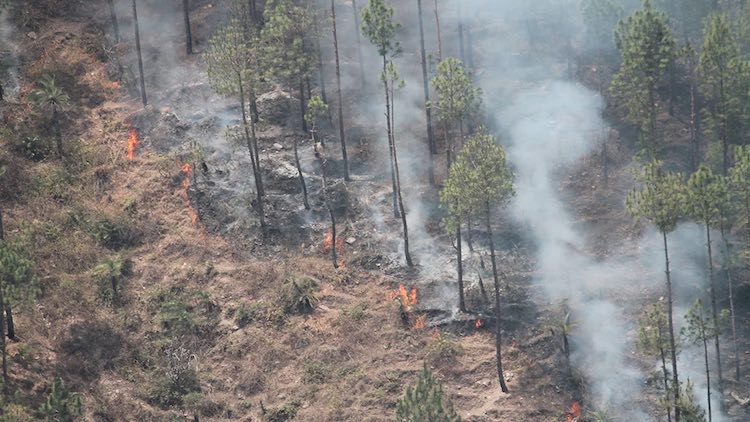Fire And Ice: Soot darkens Himalayan Glaciers

By Rishika Pardikar/thethirdpole.net
“We have vast grasslands in the area and during dry months like March and April, it is easy for fires to spread across the forest,” said Naveen Khandelwal, deputy director of the Pilibhit Tiger Reserve. He also noted that many farms surround the tiger reserve and, “when farmers burn crop residue, the fires sometimes spread to the forests also.”
The Pilibhit Tiger Reserve falls in the Terai Arc Landscape in the foothills of the Himalayas. It is one of the most fire-prone areas in the country. According to a technical study by the Forest Survey of India, about 37.54% of the forest cover in Uttar Pradesh is either extremely highly or moderately fire-prone. The same study also notes that 32.75% of the forest cover in Uttarakhand which also falls within the Terai spread, is between extremely to moderately fire-prone. In addition to being a local problem, fires in the Terai region have larger impacts, especially on glaciers in the Himalayas.
Also Read:
The Pilibhit Tiger Reserve falls in the Terai Arc Landscape in the foothills of the Himalayas. It is one of the most fire-prone areas in the country. According to a technical study by the Forest Survey of India, about 37.54% of the forest cover in Uttar Pradesh is either extremely highly or moderately fire-prone. The same study also notes that 32.75% of the forest cover in Uttarakhand which also falls within the Terai spread, is between extremely to moderately fire-prone. In addition to being a local problem, fires in the Terai region have larger impacts, especially on glaciers in the Himalayas.


Latest Videos
















